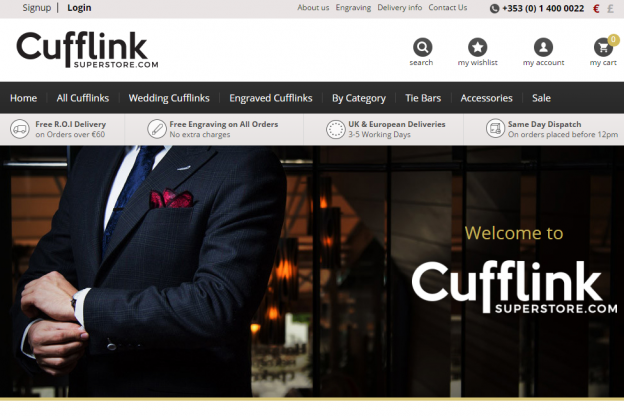How Much Should A Website Cost?
This is most common question anyone in the web design industry gets asked and if you know web designers you know it is not always a straightforward answer. Compare it to asking a car sales man how much a car costs. It all depends on what you want the car to do. To get an accurate quote on a website you need to give the web designer company more details.
I am writing this article in the hope that it will give you some insights on how to effectively budget for your website. In the interest of full disclosure, I have a small bias because I work for one of the best website development companies in the known universe! I will try and keep my ego in check and give you information based on my experience in the web design industry over the last 10 years.
To understand website costing you need to look at three questions:
- What do websites cost?
- What can I afford?
- What is my priority?
What do websites cost
If you carry out even the most basic research you will find that website costs vary wildly depending on where you look and it is not always clear what the difference in the result is. To help dispel some of the mist around this you can break it down into four broad categories.
D.I.Y Websites €0 – €500
Platforms like wordpress.com, Weebly & Squarespace offer you the option of do it yourself web design. If you have some technical or design experience it can be a great low cost options. As with all DIY projects the results can look fantastic or frightening depending on the skill set you have. Most of these platforms come with preset themes that may well suit your needs and require little else other than your content.
Assisted D.I.Y. Websites €500 – €1500
For the less brave but still budget sensitive they can engage a professional to set up a WordPress theme and tweak it to suit your requirements. This normally leaves you with a great looking site that you then must populate yourself with your own content. This can be a real winner for small business or start ups as there is minimal outlay and you have an experienced developer on hand. A word of warning though: Your professional works based on billable hours (or should do) so you need to know how much of their time you are getting as some of these projects can creep which can lead to a fractious relationship between you and your developer which is no good for anybody. Always ask what the hourly or day rate is and then cost in terms of time. It is fairer to both of you.
Professional Website €1500 – €3000
This is where a lot of web designers like to work. Still a reasonable cost but more time to do more. Believe it or not web designers like to create beautiful work and if they have the right budget they normally do just that. As with the previous option make sure you know the time rates for your web development company and agree a reasonable timeline at the outset. This price range is perfect for standard business websites or simple ecommerce systems. If you need your site to go a little further or do a little more it is usually possible to evolve or build onto this type of site. If you need it bespoke from the start then you need to look at the next step up.
Bespoke Web Development €3000 + €?????
Ok so this can be real blank-cheque territory so if you are going down this road you should either a) have plenty of experience with websites or b) have someone who does. Most bespoke sites are completely reworked or remodeled within their first year because clients are rarely right about what is important for their customers. Starting small and growing big is a much safer option. However, if you are committed then here are a few things to keep in mind:
- Create and sign off on a functional spec. Make sure everything you want the site to do for you and for your visitors is down in black & white.
- Create graphics before you start building. You should see and sign off on images of what the key pages of the site will look like before committing to the build. This limits the misinterpretations of developers.
- Agree a timetable for every key stage and stick to it.
- Agree rates for additional work. It is hard to think of everything and extras normally cost extra so get a clear idea of what the rates day/hourly rates are for work over and above the spec.
What can I afford?
Now that you know the kind of costs that are out there you can start to focus on the real question: What can I afford? To answer this, you need to know a few things:
How long will this website last? Websites generally have a technical shelf life of 3-5 years. If you consider the pace at which the web design industry moves you will realise that nobody can predict where we will be in three years. There is chance that your website will be as good in three years as it is today but it is more likely that something significant will have changed in security standards or user experience. If you are shopping around now you should be looking at your website spend as something that will last for the next 3-5 years (similarities here again to car buying).
How much revenue will it generate? Deciding what to invest in a website should be considered in terms of what the website is going to create. How many new leads or sales or what is the potential revenue you are expecting (top tip: be conservative!) Once you have an estimate on this, your new website development should fall between 5-10% of the gross profit on those sales.
Let’s look at two scenarios:
Website 1 is a business website with no ecommerce engine. It generates 4 leads every week with at least one of those leads converting to a sale every month. If the average value of the sale is €400 and the cost of sales (what you spent on the product) is €110; then your gross profit is €290; 10% of this is €29 so over three years this website will generate an estimated €1044 (€29 x 36 months) This puts you firmly into the assisted DIY bracket.
Website 2 is an ecommerce website generating 25 orders a day. The average order value is €48 with a gross profit of €10; That gives you a gross profit over three years of €273,750; 5% of this total is €13,687 which puts you into the bespoke price range.
The point I am making here is that you should look at your budget as a percentage of your gross profits as this gives you a sense of what a reasonable budget is. This is probably something your accountant has already told you.

What is my priority?
My decisive point for this post is that once you have all the figures, you need to decide what the priority is. You can only spend two things in business and that is time or money. I have found that there is a balance between these when it comes to web design. The more of one you spend the less of the other. You need to decide how important the website is to your business and act accordingly. You may have lots of free time and very little money which means you are going to be a master of DIY or alternatively you might have a budget and no time so the professional is your best route.
Hopefully you have gained some useful insights in pricing your next website revamp but if you are like me and have just skimmed this article let me give you all the above in a neat little cliché:
There are three options for pricing any job:
- Fast
- Right
- Cheap
You only get to choose 2.



 The Trust Stack and what it means for your ecommerce website
The Trust Stack and what it means for your ecommerce website Is your Business Harnessing the Power of Online Reviews?
Is your Business Harnessing the Power of Online Reviews? Go Live - New eCommerce Website cufflinksuperstore.com
Go Live - New eCommerce Website cufflinksuperstore.com